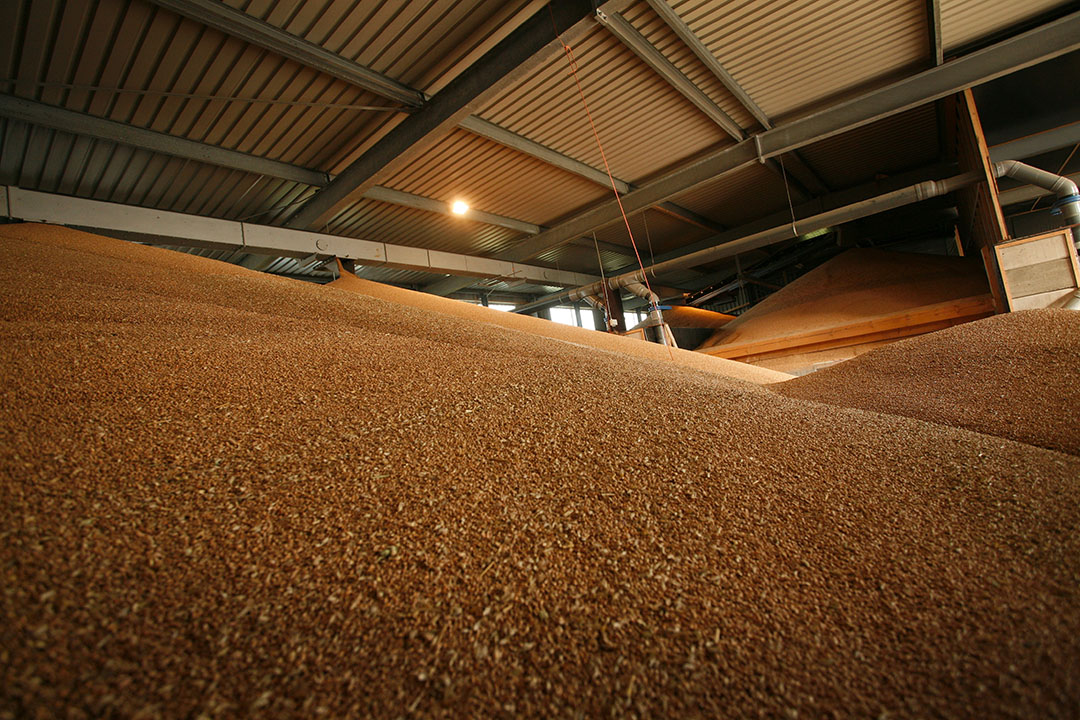US grain storage trends reflect changes in market

Although the United States (US) has increased its on-farm and off–farm storage capacity for grain since the 1990s, it still doesn’t seem to be enough to store all the grain, say analysts in a new Rabobank report.
But grain storage is not the only challenging factor in the grain merchandising market in the US, says the report. The complex trading of grain is and the profitability of grain merchandisers is influenced by the concentration of grain origination assets and, the increased competition for grain in the country from by end users, sector players with different objectives and business models, increased completion for export business and more nimble players.
More volume off-farm storage, less facilities
But zooming in on the grain storage issue, we see that both on-farm and off-farm storage have increased from their low points in the late 90s. In the last 10 years, the on-farm storage has increased by 1.6 billion bushels and off-farm storage has increased by 2.2 billion bushels (a growth of 14% and 24% respectively). However, in both cases, the storage is held in fewer and stronger hands as evidenced by the declining number of off-farm facilities (down with 638 facilities, 7%) in the past 10 years. It is can also be seen that more and more grains are stored off-farm. The on-farm and off-farm storage market share can vary per state. For example in Iowa, on-farm storage is 58.8% of the total storage capacity, while in Kansas, on-farm storage is just 26.1%. In the Southern Plains most grains is stored off-farm and this region as a strong position in the grain supply chain.
Consolidation with the top 20 grain majors
Rabobank also writes that the major US grain companies continue to consolidate, which means they control a large portion of the grain origination assets. In 2012, the top 20 US grain companies controlled 18.7% (or 1,648) if the 8,801 US total of off-farm facilities. By the end of 2017, they controlled 21.3% (or 1,820) of a smaller total number of off-farm facilities (8,527). This means an increase of 10.4% in assets from 2012 to the end of 2017. And this is despite the fact that grain majors went through the process of shutting down or disposing of several smaller, older, or inefficient assets. Thus, by the end of 2017, the top 20 US has a capacity of 2.95 billion bushels, and by the end of 2017 the capacity controlled increased to 3.4 billion bushels. Their market share of off-farm storage, however, only rose by 5%, from 28.7% in 202 to 30.1% in 2017. We also see that on-farm storage is getting bigger. An increasing number of farmers are controlling farm storage of at least 100,000 bushels whole the number of farms with smaller farm storage has declined.
Also interesting:
Animal protein to grow in the 6 key regions
Record grain capacity utilisation
The question arises if the current storage capacity is enough for the US grain market, as the report mentions that the total US grain storage utilisation is estimated at a record 71.1% as of December 1st, 2017. Capacity utilisation is calculated for on-farm, off-farm, and total, by using December 1 stocks for corn, soybeans and wheat as compared to reported storage capacity in the December Grain Stock report. Off-farm storage capacity alone is estimated at a record of 70.5% capacity utilisation. At the same time, on-farm storage capacity is running at a slightly higher capacity (71.5%), but not a record. As capacity utilisation increases, supply and demand drives storage costs higher. In addition, as storage capacity utilisation increases, commercial storage owners will not need to buy grain to fill their facility, resulting in lowered basis values.
Grain market is changing
The Rabobank report addressed that one of the issues grain farmers are facing is that it is more difficult to buy grain from producers, which implies producers’ selling patterns have changed. This is also reflected in the way storage of grains is organised in the US. Farmers are getting better grain merchandisers themselves. We also see producer consolidation, meaning that a smaller number of producers are controlling a large amount of grain in a local market. The US grain market is also dealing with new players entering the US grain origination space, such as the Japanese ownership of US based grain originators and the Chinese purchase of Noble Grains and Nidera. In addition, there is increased competition in export markets. The US share of global exports fell from approximately 45% in 2000/01 to under 30% starting in the 2011/12 crop year. Rabobank writes that this all means that traditional grain companies must transform themselves quickly. For example, grain companies need to look beyond their core grain business (e.g. move into food, deliver added value from digitalisation. “The marketplace is changing how and where grain moves to market and therefore changing the grain companies’ business models,” according to Stephen Nicholson, Senior Analyst Grains & Oilseeds. “As their business models change, assets deployed will change, ownership of assets will change, and ultimately the prices paid and received will change. The changes are just only beginning.”
Source: Rabobank











